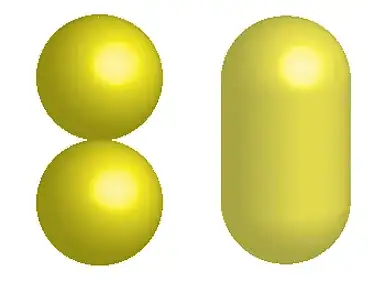Let $K$ be a convex body of volume 1 in $\mathbb{R}^n$ and $x$ a (variable) point on the boundary of $K$. Define $f_K(x)$ to be the volume of the convex hull of the union of $K$ with its reflection in $x$, that is,
$$f_K(x)=\rm{Vol}\left\{\rm{Conv}\left[K\cup(2x-K)\right]\right\}.$$
It is easy to see that for an $n$-dimensional ellipsoid $E$, the function $f_E(x)$ is constant, $f_E=e_n$, depending on $n$ only:
$\displaystyle e_n=1+{{2\sigma_{n-1}\over{\sigma_n}}}$, where $\sigma_k$ denotes the volume of the $k$-dimensional unit ball.
Question 1. If $f_K(x)$ is a constant function, must $K$ be an ellipsoid?
Question 1a. If $f_K(x)$ is a constant function, must $K$ be centrally symmetric?
Question 1b. If $K$ is centrally symmetric and $f_K(x)$ is a constant function, must $K$ be an ellipsoid?
Question 2. Is $\displaystyle e_n=\max_K\left[\,\min_{x\,\in\, bdK}\,f_K(x)\right]$? (Here the maximum is taken over all $n$-dimensional convex bodies $K$ of volume 1.)
If the answer to either of these questions is known, a reference would be greatly appreciated.

